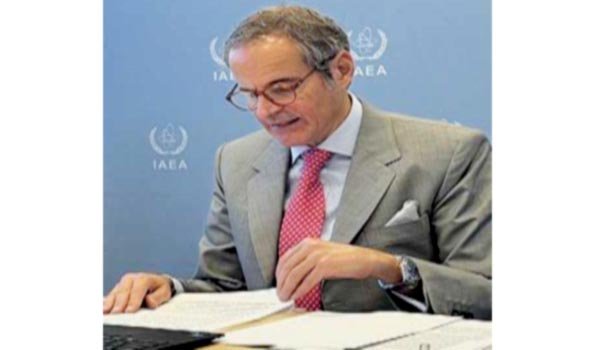New Delhi, June 22 (UNI) The International Atomic Energy Agency (IAEA) has convened an emergency meeting on Monday in the light of the urgent situation in Iran and has confirmed that ‘’no increase’’ in off-site radiation levels had been reported following US attacks on three nuclear sites.
‘’In the light of the urgent situation in Iran, I am convening an emergency meeting of the oard of Governors for tomorrow,’’ IAEA Director General Rafael Mariano Grossi said on X.
‘’Following attacks on three nuclear sites in Iran – including Fordow – the IAEA can confirm that no increase in off-site radiation levels has been reported as of this time,’’ the IAEA said. However, IAEA would provide further assessments on situation in Iran as more information becomes available, it said.
The IAEA said a large nuclear complex in Esfahan has been targeted for a second time during Israel’s attacks on Iran over the past nine days, with several more buildings struck.
Earlier, US President Donald Trump announced that his country had carried out ‘’precision strikes’’ on three nuclear facilities – Fordow, Esfahan and Natanz.
“Our objective was destruction of Iran’s nuclear enrichment capacity and put a stop to the nuclear threat posed by the world’s number one State sponsor of terror. I can report to the world that the strikes were spectacular, military success. The nuclear enrichment facilities have been completely and totally obliterated,” said Trump.
Israeli Prime Minister Benjamin Netanyahu said “With the awesome and righteous might of the United States, in tonight’s actions against Iran’s nuclear facilities America has been unsurpassed. It has done what no other country on earth could do. History will record that President Trump acted to deny the world’s most dangerous regime the world’s most dangerous weapon. President Trump and I offered peace through strength. First comes strength and then comes peace,’ Netanyahu said.
The IAEA DG had said in a report to the UN Security Council on Saturday that attacks on nuclear sites in Iran had caused a sharp degradation in nuclear safety and security in that country.
However, although they had not so far led to a radiological release affecting the public, there is a danger this could occur.
The US attacked three nuclear sites in Iran — Fordow, Esfahan and Natanz. The Natanz enrichment site contains two facilities. The first is the main Fuel Enrichment Plant. Initial attacks on June 13 targeted and destroyed electricity infrastructure at the facility, including an electrical sub-station, the main electric power supply building, and emergency power supply and back-up generators. On the same day, the main cascade hall appears to have been attacked using ground-penetrating munitions.
The second facility at Natanz is the Pilot Fuel Enrichment Plant. It consists of aboveground and underground cascade halls. On June 13 the above-ground part was functionally destroyed and the strikes on the underground cascade halls were seriously damaging.
The level of radioactivity outside the Natanz site has remained unchanged and at normal levels, indicating no external radiological impact on the population or the environment.
However, within the Natanz facility there is both radiological and chemical contamination. It is possible that Uranium isotopes contained in Uranium Hexafluoride, Uranyl Fluoride and Hydrogen Fluoride are dispersed inside the facility.
The radiation, primarily consisting of alpha particles, poses a significant danger if inhaled or ingested. This risk can be effectively managed with appropriate protective measures, such as using respiratory devices. The main concern inside the facility is chemical toxicity.
Fordow is Iran’s main enrichment location for enriching uranium to 60 percent. The Agency is not aware of any damage at Fordow at this time.
At the Esfahan nuclear site, four buildings were damaged in last Friday’s attack: the central chemical laboratory, a uranium conversion plant, the Tehran reactor-fuel manufacturing plant, and the enriched uranium metal processing facility, which was under construction.
No increase in off-site radiation levels was reported. As in Natanz, the main concern is chemical toxicity.











